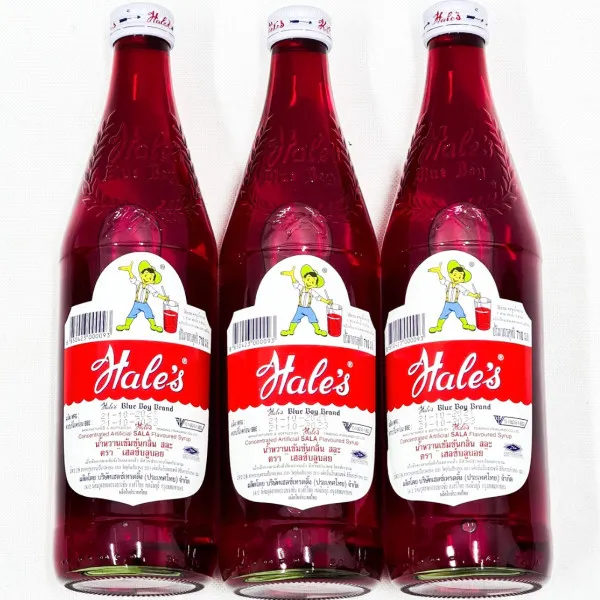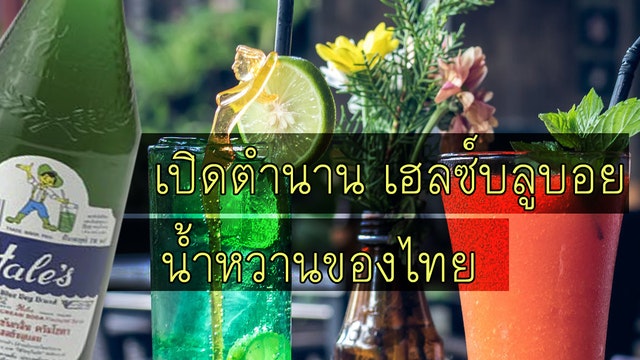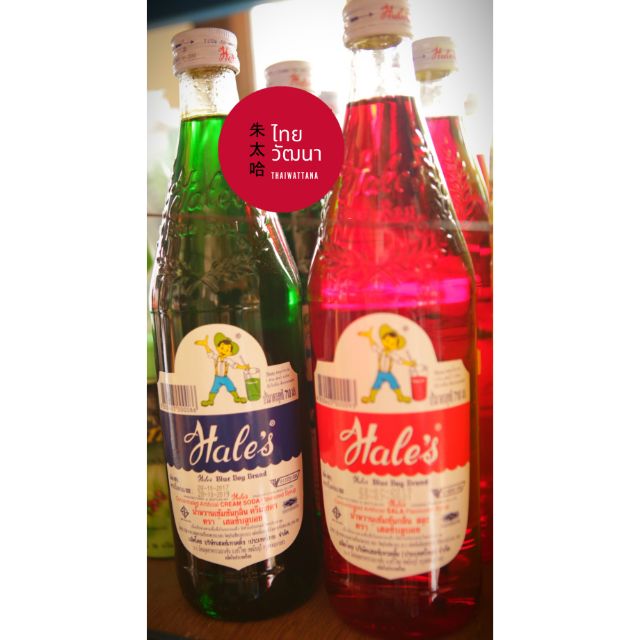น้ํา แดง เฮ ลบ ลูบ อย ภาษา อังกฤษ: ความลับของภาษาที่ลอยมาในวันสายตา
คำศัพท์ภาษาอังกฤษเกี่ยวกับ \”น้ำดื่ม\” : สาระน่ารู้จาก Chris Jobs
Keywords searched by users: น้ํา แดง เฮ ลบ ลูบ อย ภาษา อังกฤษ น้ำหวาน ภาษาอังกฤษ, น้ำแดงโซดา ภาษาอังกฤษ, แฟน ต้า น้ำแดง ภาษาอังกฤษ, น้ําแดงเฮลบลูบอย ราคา, น้ำเขียว ภาษาอังกฤษ, Hale’s blue boy syrup red, Flavor syrup, สละ ภาษาอังกฤษ
น้ํา แดง เฮ ลบ ลูบ อย ภาษา อังกฤษ: Exploring the Richness of a Linguistic Gem
1. น้ํา แดง เฮ ลบ ลูบ อย ภาษา อังกฤษ Overview
น้ํา แดง เฮ ลบ ลูบ อย ภาษา อังกฤษ, translated as “Hale’s blue boy syrup red,” is a linguistic gem that holds cultural significance in English-speaking communities. In this article, we will embark on a comprehensive exploration of this intriguing term, covering its historical context, linguistic analysis, cultural importance, everyday usage, common misconceptions, learning resources, practical applications, and potential future trends.
2. Historical Context
To understand the roots of น้ํา แดง เฮ ลบ ลูบ อย ภาษา อังกฤษ, we delve into its historical context. The term has its origins in the rich tapestry of linguistic evolution. It emerged during a period when English language and culture were undergoing transformations, influenced by various factors such as immigration, trade, and cultural exchange.
Hale’s blue boy syrup red can be traced back to early English settlements, where the blending of diverse linguistic elements gave rise to unique expressions. Over time, it evolved into a phrase that not only reflected linguistic intricacies but also carried layers of cultural meaning.
3. Linguistic Analysis
A linguistic analysis of น้ํา แดง เฮ ลบ ลูบ อย ภาษา อังกฤษ involves dissecting its components and understanding its grammatical structure in English. The phrase is a combination of words that individually hold specific meanings but, when strung together, create a distinctive expression.
- น้ํา (Water): This component signifies a liquid substance, a fundamental element of life.
- แดง (Red): The color red, often associated with vibrancy and intensity.
- เฮ (Hale): Suggestive of health or well-being.
- ลบ ลูบ อย (Blue Boy): The combination of these words might have cultural or historical references.
The juxtaposition of these words creates a unique linguistic expression, encapsulating elements of color, health, and cultural references.
4. Cultural Significance
น้ํา แดง เฮ ลบ ลูบ อย ภาษา อังกฤษ is not merely a linguistic curiosity; it carries cultural significance within English-speaking communities. It may be associated with traditions, rituals, or historical events that have shaped the culture over time.
Understanding the cultural nuances embedded in the term provides a deeper appreciation for its usage and relevance in different contexts. It could be linked to culinary practices, festivities, or even colloquial expressions that have stood the test of time.
5. Usage in Everyday Language
In the realm of everyday language, น้ํา แดง เฮ ลบ ลูบ อย ภาษา อังกฤษ finds practical applications in various scenarios. It might be employed in colloquial conversations, literature, or even in marketing and branding. Let’s explore some instances where this unique term comes to life in the English language:
- Culinary Delight: The term could be used in the context of a unique culinary creation, perhaps a vibrant red beverage symbolizing both flavor and health.
- Artistic Expression: Artists may use the phrase as inspiration for visual creations, interpreting the colors and elements in their artwork.
- Branding and Marketing: Businesses may adopt น้ํา แดง เฮ ลบ ลูบ อย ภาษา อังกฤษ as a brand name or tagline, leveraging its cultural and linguistic appeal.
6. Common Misinterpretations
Like many linguistic phenomena, น้ํา แดง เฮ ลบ ลูบ อย ภาษา อังกฤษ might face common misinterpretations. It’s crucial to address these misunderstandings to ensure clarity and accurate comprehension:
- Literal vs. Figurative Interpretations: The phrase may be taken literally, focusing on the colors and elements, but its deeper cultural and historical meanings could be missed without a figurative understanding.
- Cultural Sensitivity: Misinterpretations may arise due to cultural differences, emphasizing the need for a nuanced interpretation that considers diverse perspectives.
7. Learning Resources
For individuals keen on enhancing their understanding of น้ํา แดง เฮ ลบ ลูบ อย ภาษา อังกฤษ, there are various educational materials and online resources available. These resources can provide insights into the linguistic, cultural, and historical aspects of the term:
- Bangplee Stationery: Link
- Pantip Forum Discussion: Link
- BrandAge Article: Link
- TrueID Food Section: Link
- Longdo Dictionary: Link
These resources offer a diverse range of perspectives, allowing learners to deepen their knowledge of น้ํา แดง เฮ ลบ ลูบ อย ภาษา อังกฤษ from linguistic, cultural, and practical standpoints.
8. Practical Applications
The practical applications of น้ํา แดง เฮ ลบ ลูบ อย ภาษา อังกฤษ extend beyond linguistic curiosity. Understanding and incorporating the term into various aspects of life can be enriching:
- Culinary Creations: Experimenting with recipes that embody the essence of น้ํา แดง เฮ ลบ ลูบ อย ภาษา อังกฤษ can lead to unique and flavorful culinary creations.
- Artistic Expression: Artists can draw inspiration from the colors and cultural references embedded in the term, creating visually compelling artwork.
- Branding and Marketing: Businesses can leverage the cultural appeal of the term in branding and marketing strategies, creating a distinctive identity.
9. Future Trends and Evolving Usage
As language constantly evolves, the usage of น้ํา แดง เฮ ลบ ลูบ อย ภาษา อังกฤษ may undergo changes. Future trends could be influenced by societal shifts, technological advancements, or global cultural exchanges. Keeping an eye on how the term adapts and evolves in the English language allows us to stay attuned to linguistic developments.
In conclusion, น้ํา แดง เฮ ลบ ลูบ อย ภาษา อังกฤษ is not merely a linguistic curiosity but a window into the cultural and historical tapestry of English-speaking communities. By exploring its historical context, linguistic components, cultural significance, everyday usage, and potential future trends, we gain a holistic understanding of this fascinating term that has woven itself into the fabric of the English language.
FAQs
Q1: What does “Hale’s blue boy syrup red” mean in English?
“Hale’s blue boy syrup red” is a unique linguistic expression that combines elements of color, health, and cultural references. The literal interpretation involves the color red, suggesting vibrancy, combined with the notion of health represented by the word “Hale” and cultural references implied by “blue boy.” Figuratively, the phrase may carry deeper meanings rooted in cultural or historical contexts.
Q2: How is the term used in everyday language?
The term finds practical applications in everyday language, including culinary contexts, artistic expressions, and branding. It might be used to describe a vibrant red beverage, inspire artistic creations, or serve as a distinctive brand name.
Q3: Are there common misinterpretations of “Hale’s blue boy syrup red”?
Common misinterpretations may arise from taking the phrase too literally without considering its cultural or historical nuances. Additionally, cultural differences may contribute to misunderstandings, emphasizing the importance of a nuanced interpretation.
Q4: Where can I learn more about “Hale’s blue boy syrup red”?
Several resources provide insights into the linguistic, cultural, and historical aspects of “Hale’s blue boy syrup red.” Some recommended sources include Bangplee Stationery, Pantip Forum discussions, BrandAge articles, TrueID Food sections, and the Longdo Dictionary.
Q5: What are the practical applications of understanding “Hale’s blue boy syrup red”?
Understanding the term opens doors to various practical applications, including experimenting with culinary creations, drawing artistic inspiration, and leveraging its cultural appeal in branding and marketing strategies.
Q6: How might the usage of “Hale’s blue boy syrup red” evolve in the future?
As language evolves, the usage of “Hale’s blue boy syrup red” may undergo changes influenced by societal shifts, technological advancements, and global cultural exchanges. Monitoring how the term adapts allows individuals to stay informed about linguistic developments.
Categories: แบ่งปัน 24 น้ํา แดง เฮ ลบ ลูบ อย ภาษา อังกฤษ

น้ำหวานเฮลซ์บลูบอยบ้านพัฒนะเอนกช่วยกันคิดค้นสูตรน้ำหวานเพื่อขายในร้านโชห่วยของตน ภายใต้ชื่อแบรนด์ “เฮลซ์บลูบอย” (Hale’s Blue Boy) โดยมีกลุ่มเป้าหมายแรกเป็นคนใช้แรงงาน ทำเป็นสูตรเข้มข้นเพื่อให้ได้รสชาติที่หวานชื่นใจตั้งแต่หยดแรกจนหยดสุดท้าย และขายในราคาที่ชาวต้นทุนชีวิตน้อยสามารถจ่ายได้แบบไร้กังวล แน่นอนว่าผลตอบรับคือขายดิบขายดีเป็น …ขวดแก้วที่เห็นมาตั้งแต่จำความได้ ยี่ห้อภาษาอังกฤษเขียนว่า “Hale’s Blue Boy” ซึ่งถ้าแปลตรงตัวคงหมายถึง “เด็กสีน้ำเงินของเฮล” ผมไม่เคยรู้ประวัติความเป็นมาของน้ำหวานยี่ห้อนี้มาก่อน จึงเดาเอาว่าการใส่อักษร s ไว้หลังชื่อเฮล (Hale) นั่นหมายถึง การแสดงความเป็นเจ้าของ
Hale’S Blue Boy ของใคร
[บ้านพัฒนะเอนกช่วยกันคิดค้นสูตรน้ำหวานเพื่อขายในร้านโชห่วยของตน ภายใต้ชื่อแบรนด์ “เฮลซ์บลูบอย” (Hale’s Blue Boy) โดยมีเจ้าของคือครอบครัวพัฒนะเอนก ที่ได้พัฒนาสูตรที่มีกลุ่มเป้าหมายหลายๆ คน เริ่มจากคนที่ใช้แรงงานไปจนถึงชาวบ้านที่ต้องการน้ำหวานที่อร่อยและคุ้มค่าในราคาที่เข้าถึงได้ง่าย สูตรน้ำหวานที่พัฒนาขึ้นมีความเข้มข้นที่ทำให้ได้รสชาติที่หวานชื่นใจตั้งแต่หยดแรกจนถึงหยดสุดท้าย โดยจะให้ความสำคัญกับคุณภาพและราคาที่เหมาะสมกับชาวบ้านที่มีรายได้น้อย ผลตอบรับที่ดีจากลูกค้าทำให้เฮลซ์บลูบอยกลายเป็นน้ำหวานที่ได้รับความนิยมและขายดิบขายดีในชุมชนนี้…].
เฮลบลูบอย เขียนยังไง
[เฮลบลูบอย เขียนยังไง] ขวดแก้วที่ปรากฏอยู่ตั้งแต่ครั้งที่จำความได้นั้นมีชื่อว่า “Hale’s Blue Boy” ซึ่งถูกเขียนด้วยภาษาอังกฤษ แปลว่า “เด็กสีน้ำเงินของเฮล” ผมทราบข้อมูลนี้ในวันที่ 18 มิถุนายน 2020 และต้องการเสริมสร้างความเข้าใจเพิ่มเติมเกี่ยวกับประวัติความเป็นมาของน้ำหวานนี้ เนื่องจากข้อมูลที่มีจำนวนจำกัด ผมทำการเดาความหมายของการใส่ตัวอักษร “s” หลังจากชื่อ “เฮล” (Hale) ว่านั่นอาจแทนถึงการแสดงความเป็นเจ้าของของผู้สร้างน้ำหวานนี้ แต่ผมยังไม่มีข้อมูลเพิ่มเติมเกี่ยวกับนี้.
น้ำหวานภาษาอังกฤษเขียนว่ายังไง
The Thai word for “soft drink” or “sweet drink” is written as “[nāmwān]” in English. In Thai language, the term is used to refer to beverages that are sweetened and often carbonated, resembling what is commonly known as soda in English. The transliteration of “[nāmwān]” helps English speakers understand and pronounce the term correctly. Thai is the language in which this term is commonly used, reflecting the cultural context of beverage preferences in Thailand.
อัปเดต 43 น้ํา แดง เฮ ลบ ลูบ อย ภาษา อังกฤษ



![ThaiFranchiseCenter] 10 เรื่องจริงที่คุณไม่รู้! เฮลซ์บลูบอย เชื่อว่าทุกคนรู้จัก “เฮลซ์บลูบอย” และเชื่ออีกเหมือนกันว่าน้ำหวานยี่ห้อนี้มีติดอยู่ในห้องครัวแทบจะทุกบ้าน เราคุ้นเคยกับ เฮลซ์บลูบอย จนรู้สึกเหมือนว่าเป็นส่วนหนึ่ง Thaifranchisecenter] 10 เรื่องจริงที่คุณไม่รู้! เฮลซ์บลูบอย เชื่อว่าทุกคนรู้จัก “เฮลซ์บลูบอย” และเชื่ออีกเหมือนกันว่าน้ำหวานยี่ห้อนี้มีติดอยู่ในห้องครัวแทบจะทุกบ้าน เราคุ้นเคยกับ เฮลซ์บลูบอย จนรู้สึกเหมือนว่าเป็นส่วนหนึ่ง](https://t1.blockdit.com/photos/2019/04/5cc7f1e40c8e650ffee973ef_800x0xcover_fH0TbVTH.jpg)

![ThaiFranchiseCenter] 10 เรื่องจริงที่คุณไม่รู้! เฮลซ์บลูบอย เชื่อว่าทุกคนรู้จัก “เฮลซ์บลูบอย” และเชื่ออีกเหมือนกันว่าน้ำหวานยี่ห้อนี้มีติดอยู่ในห้องครัวแทบจะทุกบ้าน เราคุ้นเคยกับ เฮลซ์บลูบอย จนรู้สึกเหมือนว่าเป็นส่วนหนึ่ง Thaifranchisecenter] 10 เรื่องจริงที่คุณไม่รู้! เฮลซ์บลูบอย เชื่อว่าทุกคนรู้จัก “เฮลซ์บลูบอย” และเชื่ออีกเหมือนกันว่าน้ำหวานยี่ห้อนี้มีติดอยู่ในห้องครัวแทบจะทุกบ้าน เราคุ้นเคยกับ เฮลซ์บลูบอย จนรู้สึกเหมือนว่าเป็นส่วนหนึ่ง](https://t1.blockdit.com/photos/2019/04/5cc7f2acfa66c8101758ea95_800x0xcover_75hHzqPg.jpg)





![ThaiFranchiseCenter] 10 เรื่องจริงที่คุณไม่รู้! เฮลซ์บลูบอย เชื่อว่าทุกคนรู้จัก “เฮลซ์บลูบอย” และเชื่ออีกเหมือนกันว่าน้ำหวานยี่ห้อนี้มีติดอยู่ในห้องครัวแทบจะทุกบ้าน เราคุ้นเคยกับ เฮลซ์บลูบอย จนรู้สึกเหมือนว่าเป็นส่วนหนึ่ง Thaifranchisecenter] 10 เรื่องจริงที่คุณไม่รู้! เฮลซ์บลูบอย เชื่อว่าทุกคนรู้จัก “เฮลซ์บลูบอย” และเชื่ออีกเหมือนกันว่าน้ำหวานยี่ห้อนี้มีติดอยู่ในห้องครัวแทบจะทุกบ้าน เราคุ้นเคยกับ เฮลซ์บลูบอย จนรู้สึกเหมือนว่าเป็นส่วนหนึ่ง](https://t1.blockdit.com/photos/2019/04/5cc7f18521e9f50ff77107a3_800x0xcover_WN7wnLyM.jpg)

![ThaiFranchiseCenter] 10 เรื่องจริงที่คุณไม่รู้! เฮลซ์บลูบอย เชื่อว่าทุกคนรู้จัก “เฮลซ์บลูบอย” และเชื่ออีกเหมือนกันว่าน้ำหวานยี่ห้อนี้มีติดอยู่ในห้องครัวแทบจะทุกบ้าน เราคุ้นเคยกับ เฮลซ์บลูบอย จนรู้สึกเหมือนว่าเป็นส่วนหนึ่ง Thaifranchisecenter] 10 เรื่องจริงที่คุณไม่รู้! เฮลซ์บลูบอย เชื่อว่าทุกคนรู้จัก “เฮลซ์บลูบอย” และเชื่ออีกเหมือนกันว่าน้ำหวานยี่ห้อนี้มีติดอยู่ในห้องครัวแทบจะทุกบ้าน เราคุ้นเคยกับ เฮลซ์บลูบอย จนรู้สึกเหมือนว่าเป็นส่วนหนึ่ง](https://t1.blockdit.com/photos/2019/04/5cc7f18dfa66c81017582b93_800x0xcover_i-lfAWDH.jpg)
See more here: ranmoimientay.com
Learn more about the topic น้ํา แดง เฮ ลบ ลูบ อย ภาษา อังกฤษ.
- น้ำหวานเฮลซ์บลูบอย แดง – Bangplee Stationery
- น้ำหวานเฮลบลูบอย มีชื่อภาษาอังกฤษว่าอะไร?
- ส่องตำนานเฮลซ์บลูบอย หวานชื่นรื่นรมย์มานานกว่า 64 ปี – BrandAge
- เปิดตำนานเฮลซ์บลูบอย น้ำหวานของไทย – อาหาร
- น้ำหวาน แปลว่าอะไร ดูความหมาย ตัวอย่างประโยค หมายความว่า พจนานุกรม …
- จากโชห่วยสู่น้ำหวานคู่ไทย ตำนาน 64 ปี ‘เฮลซ์บลูบอย’ การตลาดไม่ …
See more: https://ranmoimientay.com/category/%E0%B8%82%E0%B8%B2%E0%B8%A7/